When starting a new business, product, or service, one of the most important steps you can take is understanding trademark protection. From your name and logo to slogans and taglines, trademarks are the building blocks of brand identity. Protecting them ensures your brand is secure, distinctive, and legally enforceable.
This guide will walk you through what trademarks are, why they matter, and how to protect your business effectively.

Why Understanding Trademark Protection Matters
Your business name is more than just words—it’s your reputation, recognition, and often your most valuable asset. A great brand name is memorable and marketable, but it also needs to be legally available.
- Small local businesses (like a corner salon or dry cleaner) may rely on basic protections.
- Growing companies and startups need stronger safeguards to prevent competitors from using or copying their names.
As naming experts often say: the more distinctive your brand name, the easier it will be to protect.
Have the Brandings Team Name Your Business or Product with our Custom Naming Service!
Common Law Rights & the ™ Symbol
In the United States, trademark rights are based on first use. The moment you start using a name in commerce, you may have rights under common law trademark protection.
Using the ™ symbol signals to others that you are claiming ownership—even if your mark is not formally registered.
However, common law rights have limits:
- They can be harder to enforce compared to registered trademarks.
- They may only apply within your geographic region.
With that said, the Lanham Act (15 U.S.C. § 1127) enacted by the United States Congress in 1946 provides federal protection for distinctive marks used in commerce. In accordance with 15 U.S.C. § 1125(a), Brandings® has established substrative initial use and has maintained continuous use of the mark under 15 U.S.C. § 1065.
The “TM” designation is recognized by international trademark law. The scope of the Lanham Act is independent of and concurrent with state common law and global trademark law.
Any and all trademark rights including the “TM” designation are transferred to you as part of the purchase. After the transfer is complete you will have 100% ownership and control.
A “Certificate of Purchase and Transfer of Common-Law Trademark Rights” for the mark is available for issue, upon request, at no additional charge. The Certificate documents the date Brandings® established initial use of the mark and attests to the continuous use of the mark under 15 U.S.C. § 106. The Certificate will warrant that the mark is free and clear of any and all liens and encumbrances and that Brandings® has full legal right, power and authority to sell, assign and transfer the mark.
Effective the date of transfer, all claimed rights to the mark, common-law-trademark protection and global constructive notice of ownership, designated by the “TM” symbol applied to the mark, will be transferred to you and your respective heirs, executors, administrators, legal representatives, successors and assigns.
Federal Registration & the ® Symbol
For broader protection, registering your trademark with the United States Patent & Trademark Office (USPTO) is the best option. A registered trademark, designated with the ® symbol, provides:
- Nationwide recognition of ownership
- Legal presumption of validity
- Easier enforcement in court
- Ability to block similar marks in related industries
Example: “OnlyYogurt®”
If you register OnlyYogurt for yogurt products, others cannot use that name in the yogurt or ice cream market. But someone could still use it for an unrelated service, like moving companies.
That’s why “United” can exist across airlines, healthcare, and insurance without conflict—each trademark applies to a specific category of goods or services.
How to Conduct a Free Trademark Search
Before committing to a name, conduct a search to see if it’s available. You can:
- Run a simple Google or Bing search
- Use the USPTO Trademark Search (TESS)
- Check the EU Intellectual Property Office (EUIPO) database
These tools help you identify existing uses and reduce the risk of conflicts.
What Makes a Trademark Stronger?
Trademarks fall on a spectrum of distinctiveness. The more unique your name, the stronger your protection:
- Invented Names – Made-up words (e.g., Vistle, Zoltus)
- Arbitrary Names – Real words with unrelated uses (e.g., Apple for computers)
- Evocative Names – Suggest qualities or emotions (e.g., BlueSurge, Luxcian)
- Descriptive Names – Literal or straightforward (e.g., SupplyDepo)
- Generic Names – No protection (e.g., “Aspirin,” “Escalator”)
💡 Tip: If your goal is strong trademark protection, aim for invented, arbitrary, or evocative names.
Professional Trademark Services
Trademark registration can be complex, which is why many entrepreneurs turn to professional services. A comprehensive service may include:
- Federal & state trademark searches
- Domain availability checks
- Attorney-prepared USPTO applications
- Ongoing monitoring of your application
- Electronic trademark certificate upon registration
These services help reduce risk and ensure your brand is properly secured.
FAQ: Understanding Trademark Protection

1. What is the difference between ™ and ®?
- ™ can be used on any name, slogan, or logo to show you’re claiming rights, even without registration.
- ® can only be used once your trademark is officially registered with the USPTO.
2. Do I need to register my trademark with the USPTO?
Not always. Common law protection (™) may be enough for very small, local businesses. But if you want nationwide protection, stronger legal rights, and easier enforcement, USPTO registration is recommended.
3. How much does it cost to register a trademark?
USPTO filing fees usually range from $275–$375 per class of goods/services, plus any attorney or professional service fees.
4. How long does it take to get a registered trademark?
On average, the process takes 8–12 months, though it can take longer if there are objections or challenges.
5. Can I trademark a domain name?
Not directly. You can’t trademark the domain extension (.com, .net, etc.), but you can trademark the brand name that appears before it (e.g., “Biozyn” in Biozyn.com).
6. What happens if someone infringes on my trademark?
If your trademark is registered, you can send a cease-and-desist letter, file a complaint with online platforms, or take legal action. Registered marks are easier to enforce than unregistered ones.
Final Thoughts on Understanding Trademark Protection
Whether you’re a startup founder or an established entrepreneur, understanding trademark protection is essential. Choosing a strong, distinctive name and taking steps to protect it—whether through common law rights or USPTO registration—helps safeguard the identity and value of your brand.
Your brand name is one of your business’s most valuable assets. Protect it early, protect it wisely, and you’ll set your business up for long-term success.

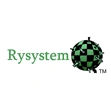
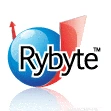
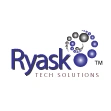
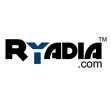
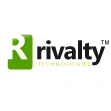
Comments are closed.